YOU EAT WITH ME. — Cheeseburger. . . . Marbled beef cheeseburger. . . . . . . . . . . — With extra BOOK REVIEW. — *The escape from hunger and premature death* . . .
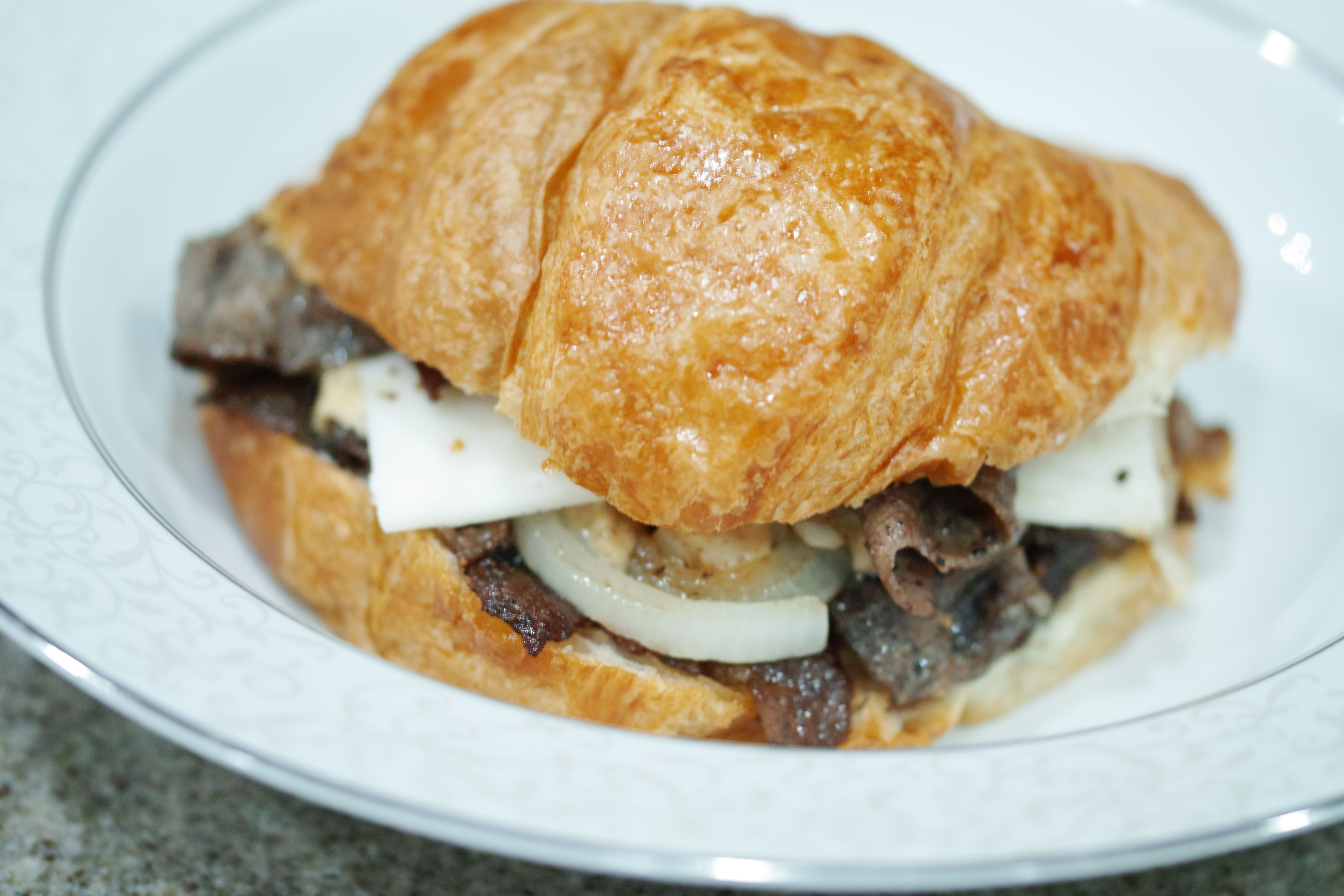
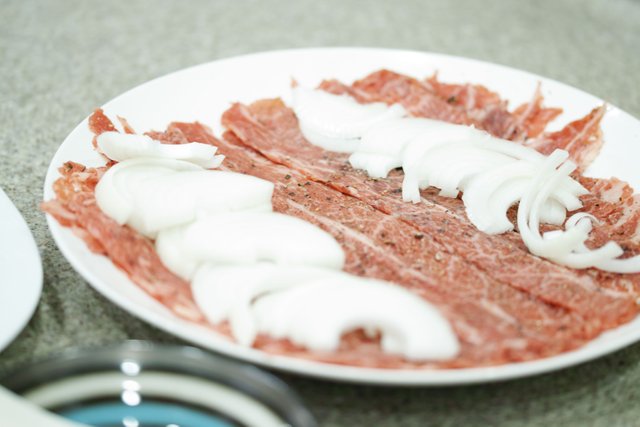
Obligatory food porn for social media. With extra science.
200 ISO. 50 MP.
``You there — ! You wanna attain enlightenment?! Huh?!''
``Hey, that sounds interesting. I do! I wanna!''
— An obligatory internet meme, quoted for academic purposes.
Yes, let's attain enlightenment. But first, let's eat.
I'm hungry, are you hungry?
You can't really attain enlightenment when you're hungry, I suggest.
So.
Most incompatibles aren't really incompatible.
(I've said that before, right? This is my third time saying this, or what?)
We're going to make a delicious, melt in your mouth cheeseburger. And make it we shall in 5 minutes. That's right, 5 minutes. Prep time included in those 5 minutes. Before you begin it requires a bit of thinking however.
Forget that nonsense about how it takes hours to marinade your beef.
Isn't that's way too long?
What . . . if . . . you'd like your melt-in-the-mouth burger . . . immediately?
I mean now. Or at least very soon.
Get 2 croissants. Slice. Use a sharp knife. Slice them, don't crush them.
Yes there exist people in this world who're unable to cut bread. Don't be one of them, I suggest.
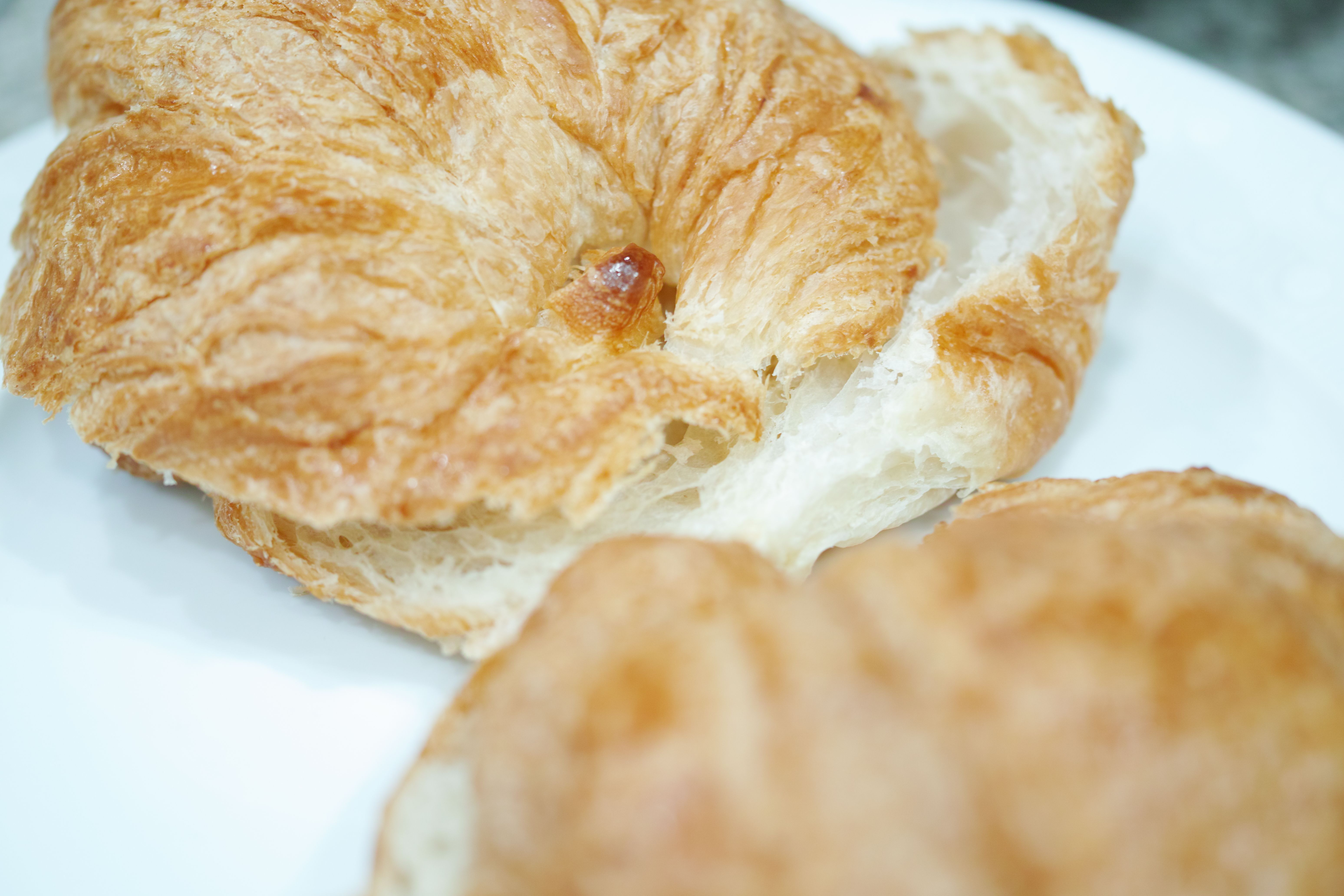
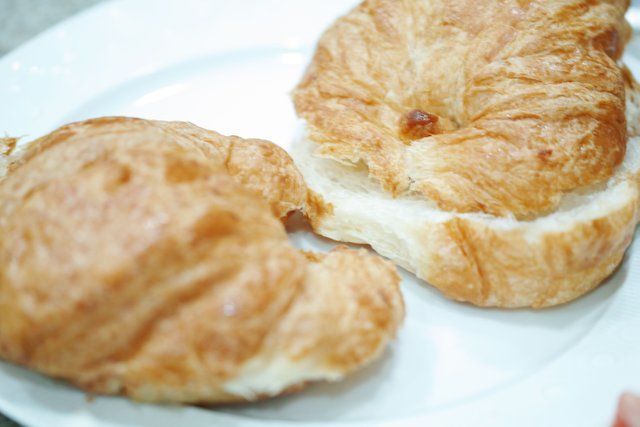
Get 2 slices of goat cheese. Yes goat cheese.
It melts perfectly. And the result is creamy but tangy.

Get 1/3 kg of well marbled beef thinly sliced.
And get 1 onion and also thinly slice that. Season with freshly ground pepper and coarsely ground salt.
Place a layer of sliced meat and salt and pepper. Then another layer. And all is ready. Let sit for 1 minute.
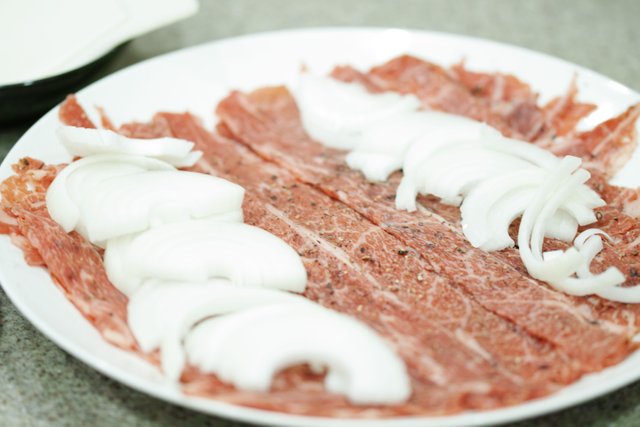
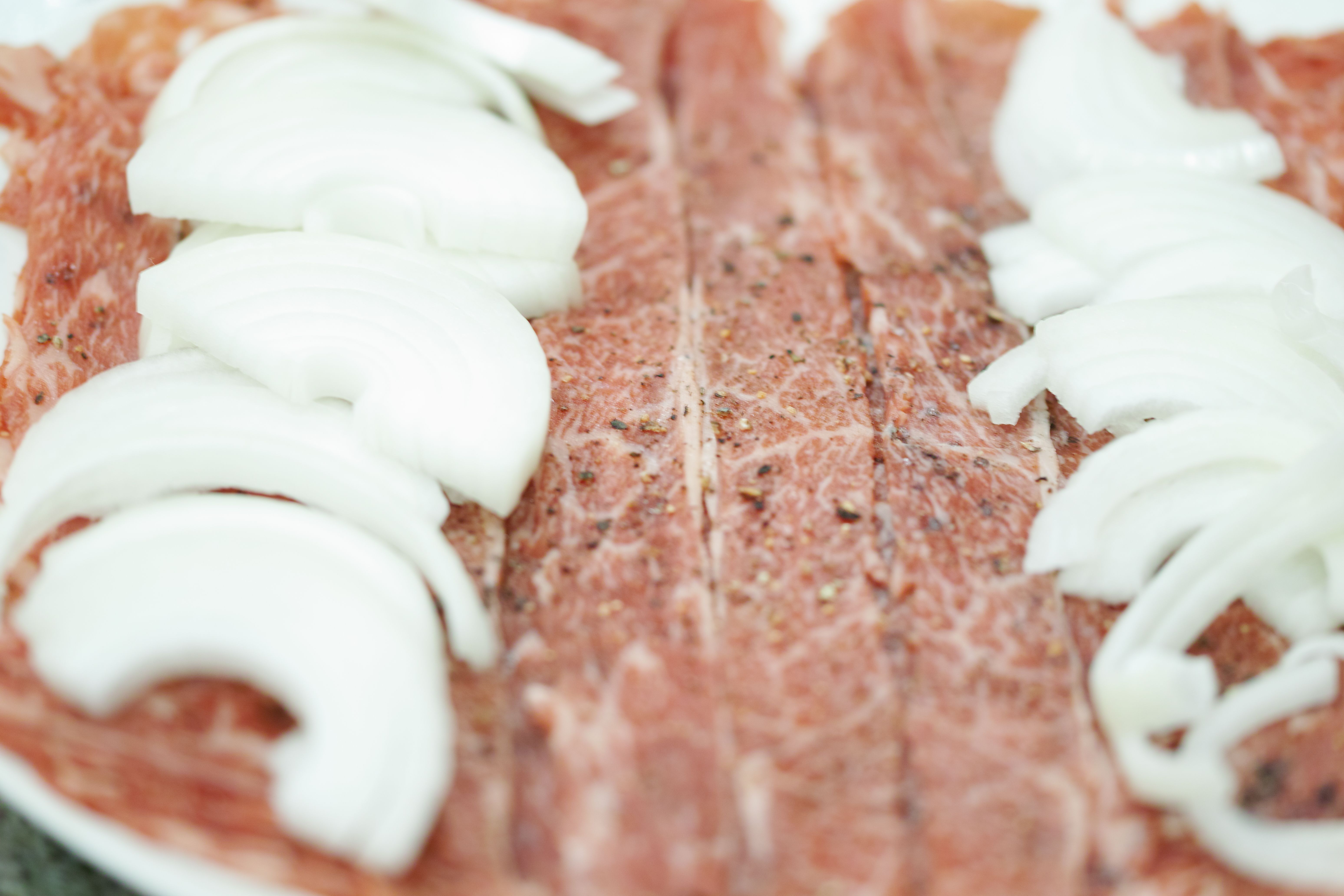
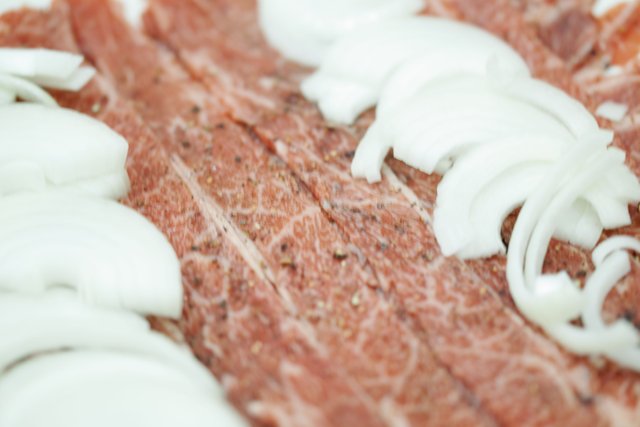
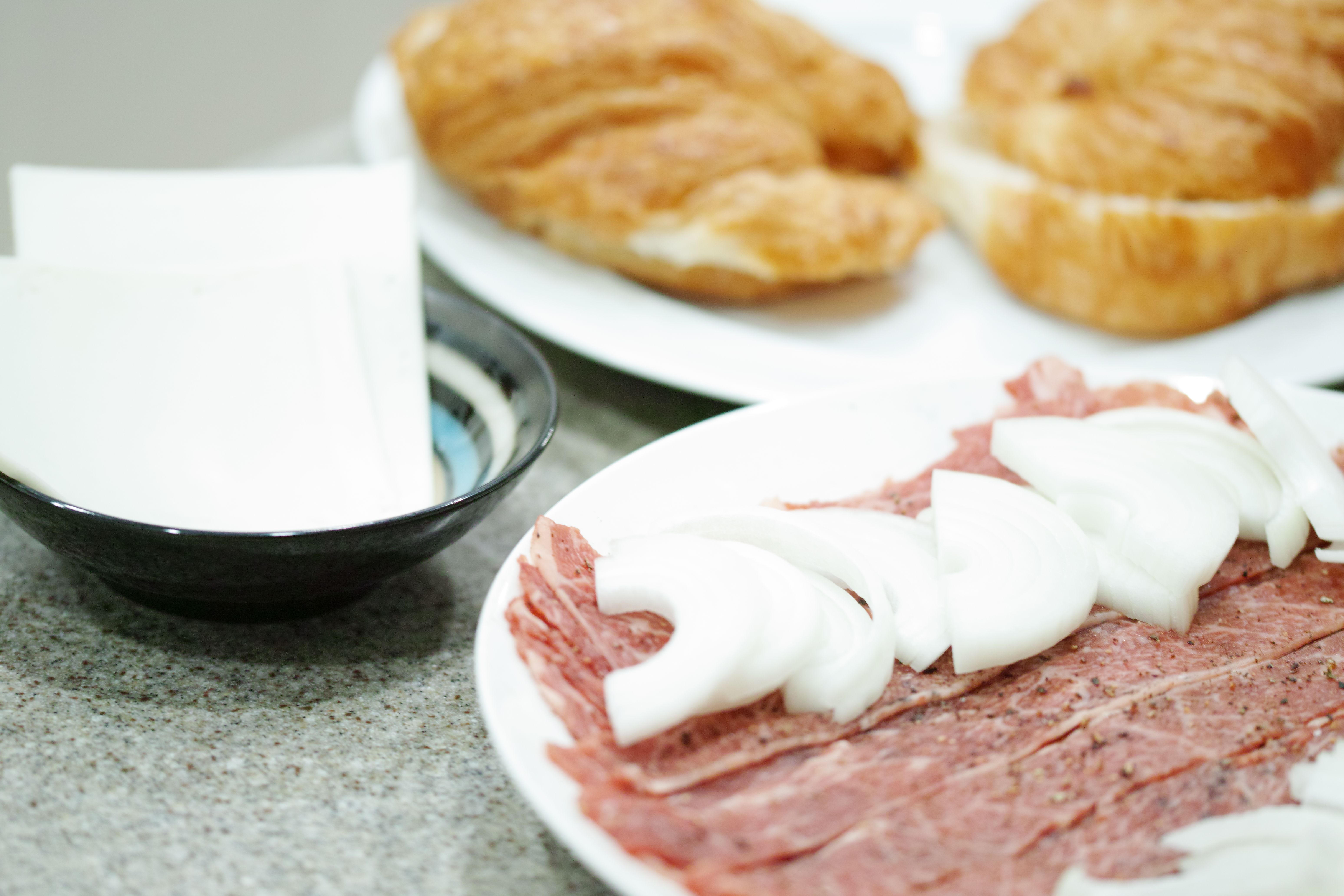
Sear and cook the meat for 1 < X < 2 minutes.
There's a reason we desire our meat thinly sliced. It cooks faster. The texture is better. You don't crush the meat as when you cook it and then slice it. Lay it flat and move it around. Start at very high heat and lower the heat as time passes. Otherwise you'll burn the meat and lose the fat. Throw in the onion near the end.
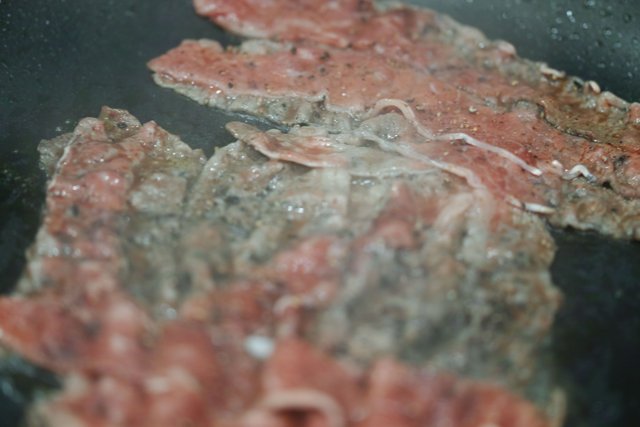
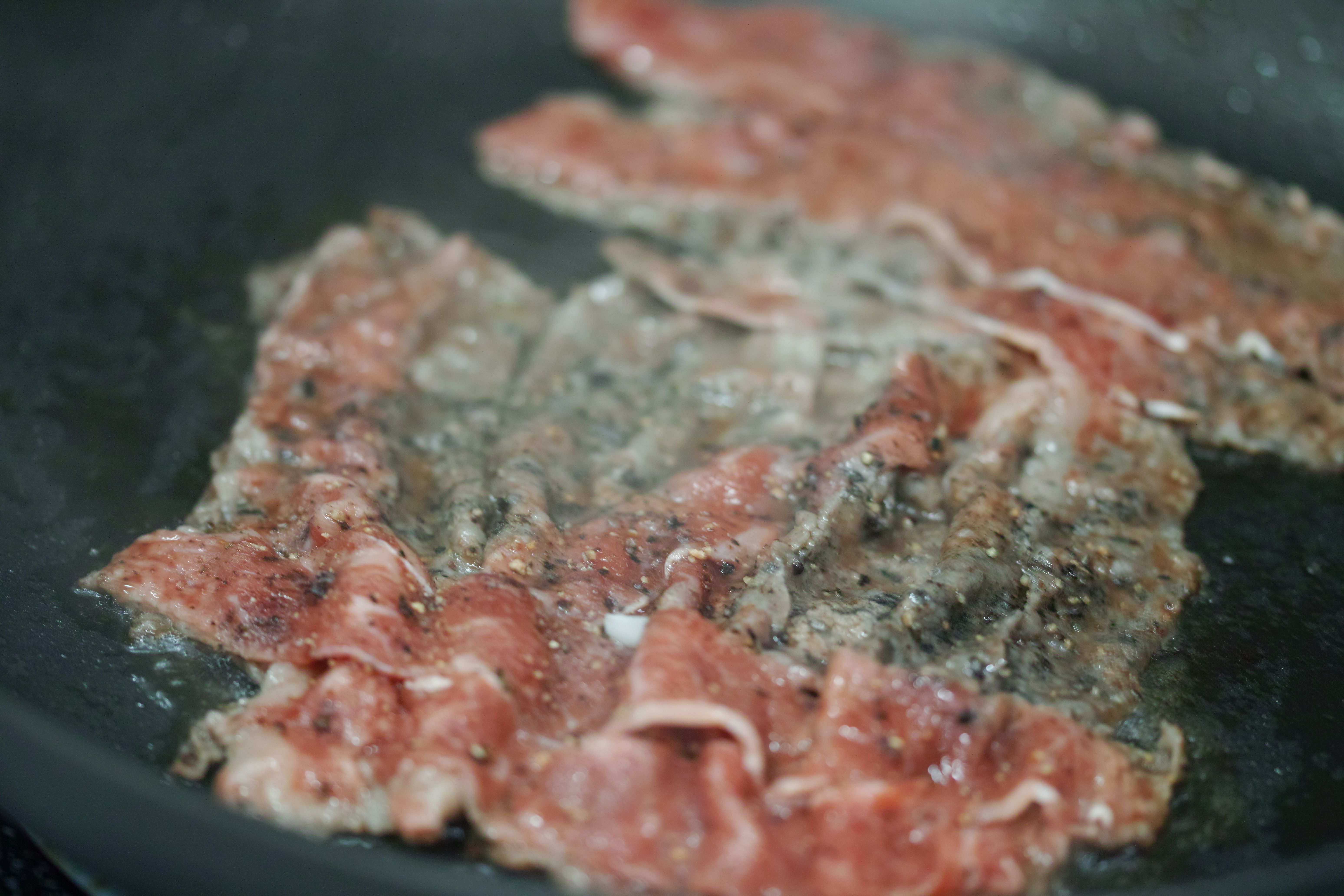
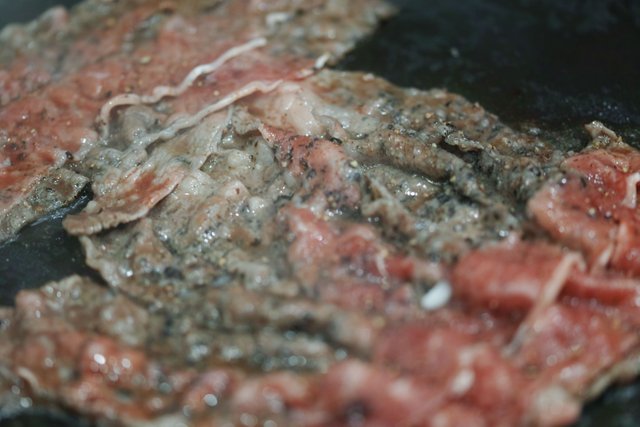
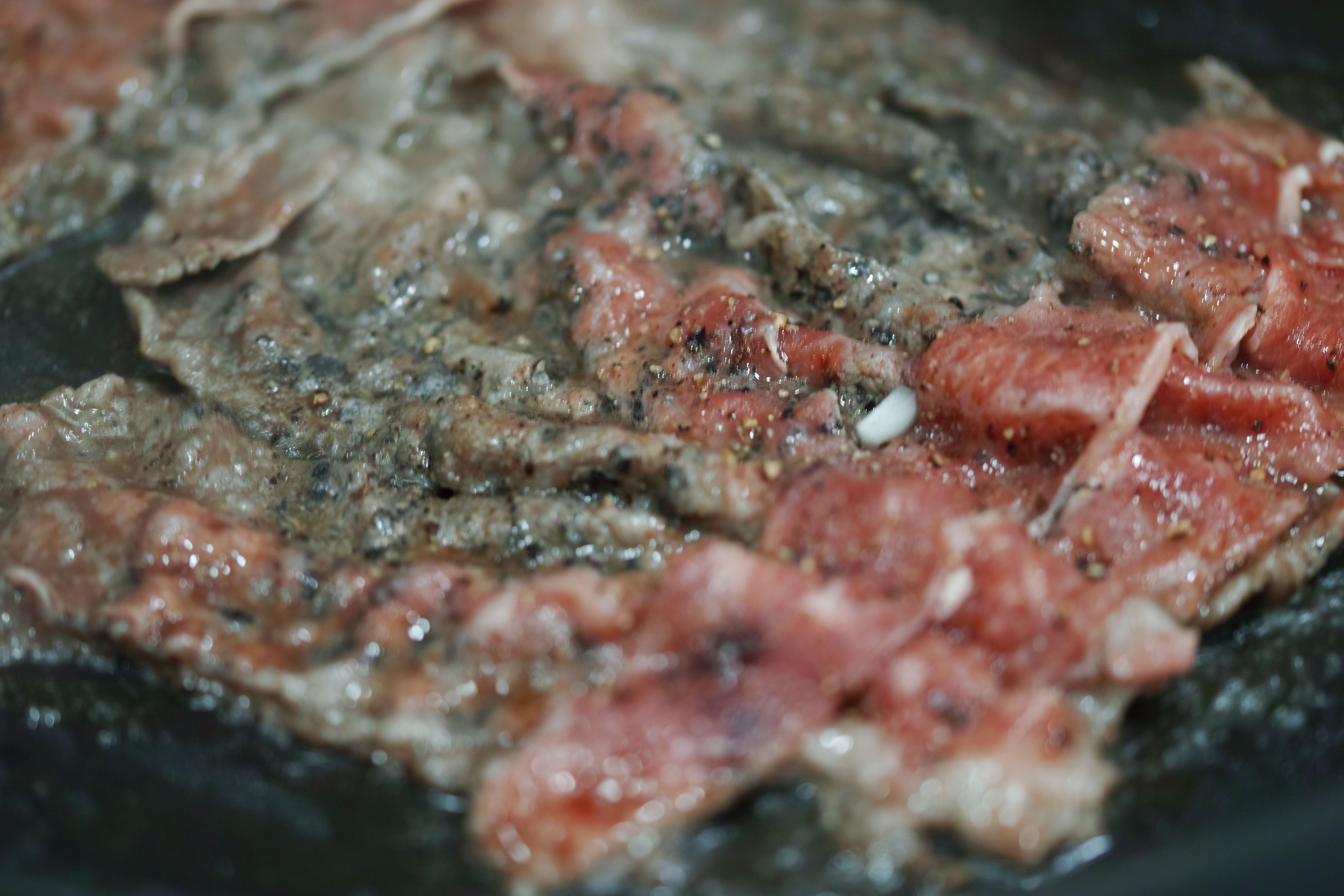
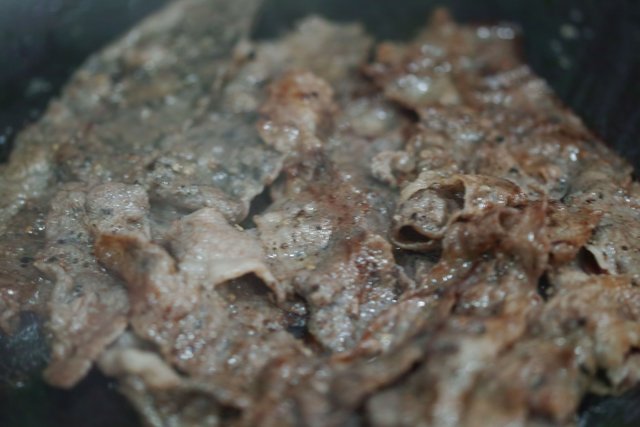
Lay meat in a weave on the croissant half.
Quickly. Layer that with lightly fried onions. Apply mildly spicy mustard.
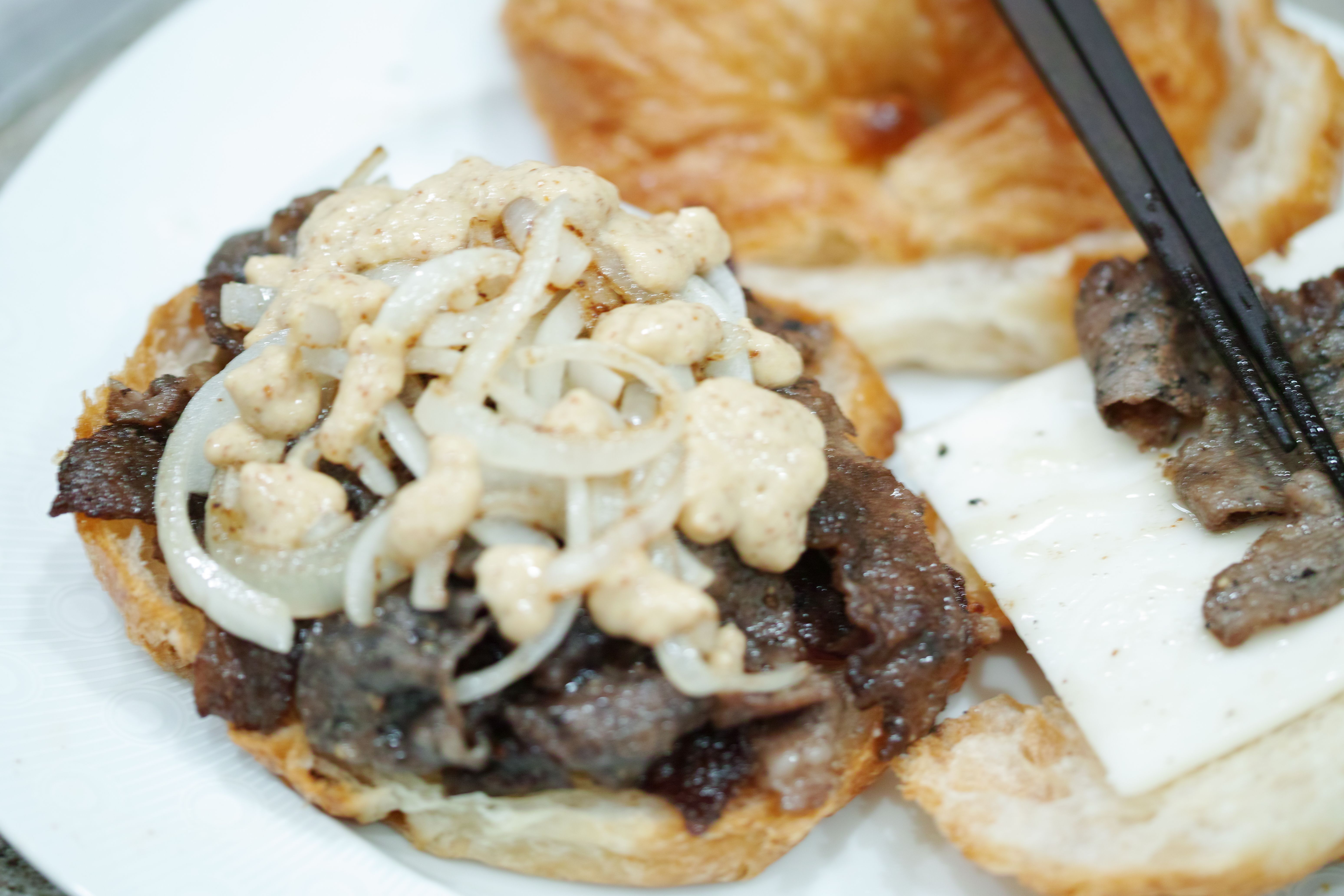
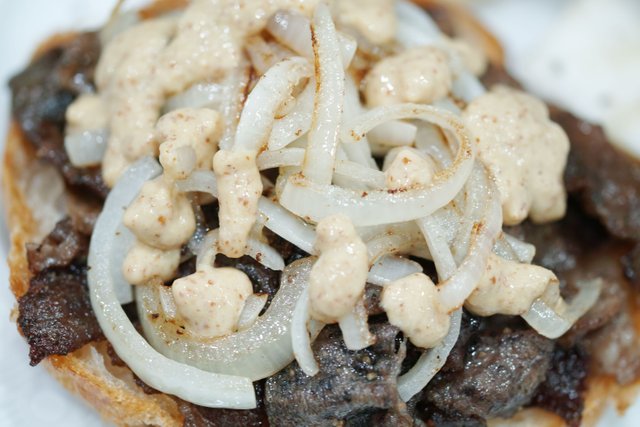
Eat your burger while it's warm.
Yes this is a real instruction.
A few people always require hand holding. It's why instruction #2 on some packages of granola bars is remove from packaging, and why instruction #5 is eat. As opposed to throw out window, shove up arse, or something like that. Don't sue the manufacturer if you decide shove up arse is more appealing than eat, and having done that are still hungry.
Seriously if you're eating alone make one burger, eat it, then sear the meat for the other burger and eat that. If you're feeding yourself and somebody else make both burgers at the same time. But do that quickly. Your meat it sliced thin. Don't forget. That means it cooks in less than 2 minutes, but it also cools down in less than 2 minutes. It doesn't melt in your mouth if it's too cold.
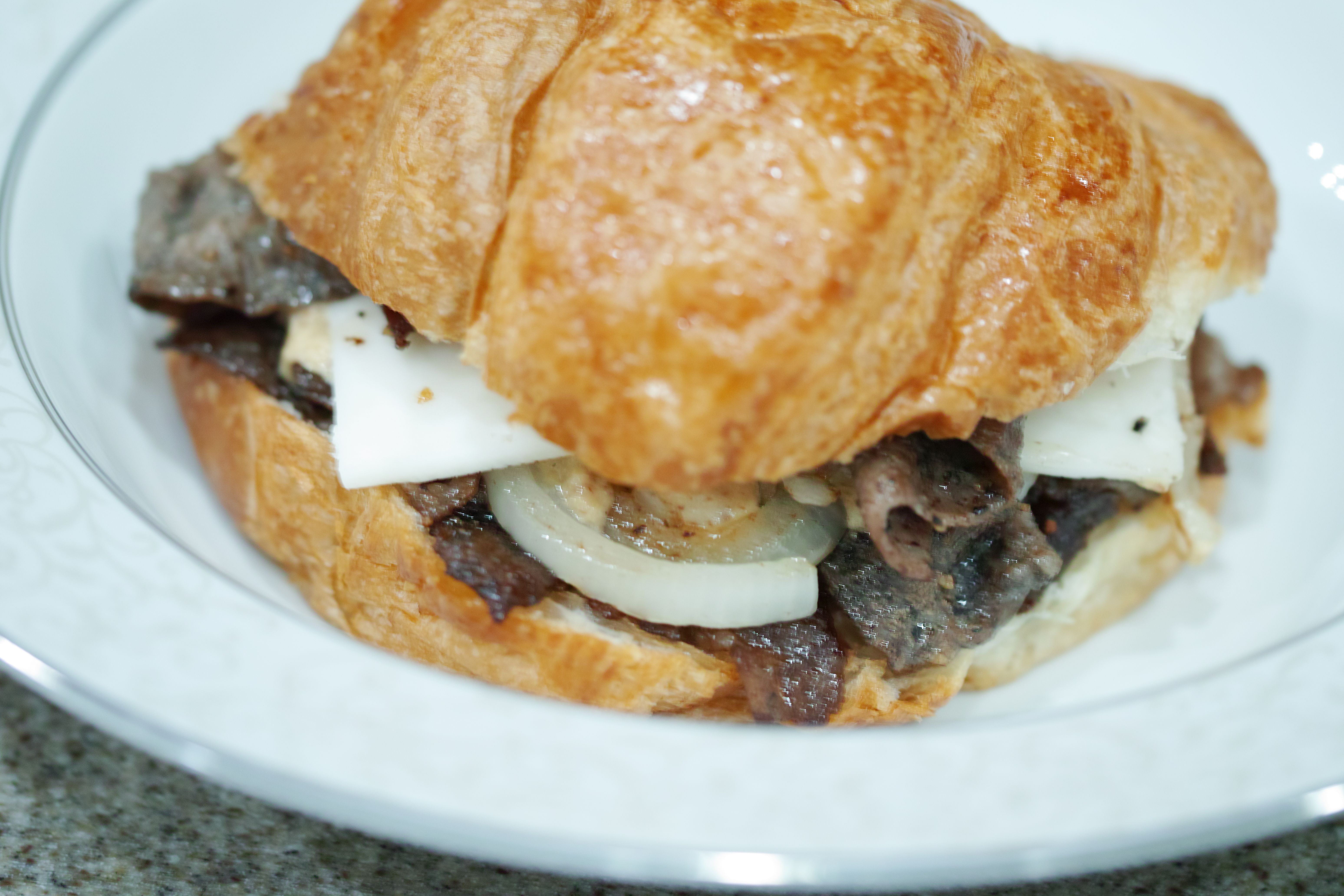

And the above is really not expensive. Not all cuts of marbled beef are expensive. That's a myth to get you to spend more. Don't be a fool. Spend, but only if you want to do that and have reason to do that.
Short prep time and low relative cost are not incompatible with tasty food — with happiness and joy. There. Now you know the secret. You're enlightened.
Which leads to the next point — that this cheeseburger is a special cheeseburger. It comes with extra BOOK REVIEW. — HOORAY. — I get to eat the burger. You read the book review and upvote and resteem and like and whatever this post.
Agreed? Right? Very good.
You ought do something intellectual while you eat.
I think I have a fitting subject to discuss after this kind of meal.
WE'LL REVIEW NOW :
Robert FOGEL, The conquest of high mortality and hunger in Europe and America, Favorites of fortune, Cambridge: Harvard University Press, 1991.
Robert FOGEL, The escape from hunger and premature death 1700–2100, Cambridge: University Press, 2004.
R. FOGEL, R. FLOUD, B. HARRIS, S. HONG, The changing body — health, nutrition, and human development in the Western World since 1700, Cambridge: University Press, 2011.
THROUGH THE LENS OF :
Carlo CIPOLLA, The economic history of world population, Baltimore: Penguin, 1962.
Konrad LORENZ, Zur naturgeschichte der aggression, Wien: Borotha Schoeler, 1963.
So.
FOG91, FOG04, FOG11 basically suggest the existence of a special feedback.
A significant historical feedback.
Industrialization significantly increased the amount of food. And this in turn significantly increased, for the majority of each of the involved human populations, the amount of food consumed by each individual.
One result was allegedly larger, healthier people. They could do more work each day. And they did more work. And lived longer, doing more work also in that way.
The result was a technophysio revolution. And this occurring basically in step with the more widely known industrial revolution.
An interesting thesis: that 25%–50% of all productivity and wealth gain were due to a technophysio revolution. Not per se the industrial revolution.
Such is the claim made by the authors in this literature.
The thesis is attractive. FOG91, FOG04, FOG11 bring in substantial literature on stunting to prove their point. Such literature is woven amidst statistics regarding how much energy the various classes and castes of the societies discussed needed to do the work they were doing. And how much they were generally receiving.
I think the thesis would be a very positive one were it true.
The flaw in the argument is that food was distributed normally or in some other symmetrical or even average manner within each class considered.
We are highly territorial organisms (CIP62, LOR63). That's very significant. Both authors apply this to discussing limits to growth of populations.
Aggregations fail to reveal behavioral thresholds and paint a smoothed out picture that is confusing and both excessively negative and positive in different ways and therefore irrelevant.
If the supply of food was lower, it does not mean that the majority of people inside each class except the upper castes and classes each ate less. Each consumed less.
The probability is much higher that each level of each society, classes relative to others classes, and within each class, ritualized aggression created institutional measures to hold territory in the abstract sense of means of obtaining resources, and excluded some parts of the population from sufficient food altogether, rather than very many eating less.
FOG91 does show a small minority of the population consuming as much energy as most people today, and that in the form of meat and other healthy sources. Upper classes and castes were eating well and only slightly increased their consumption of food. But he doesn't apply the argument to within all other classes and subpopulations.
For example, in Fifty years of new Japan (I'll find the exact quote), has contemporary discussion about hunger and famine as that changed up to the end of the 19th century, you had provinces with famine, starvation, cannibalism even, right next to provinces with overabundant harvest. Trade was restricted. Movement of goods was restricted. Etc.
Some people ate as much as they needed or desired to eat, and others were almost completely pushed off territory, in an abstract sense, where this was possible, were restricted to eating less than sufficient for mere thermal requirements and survival.
This also better explains the almost uncountable reports in primarily and contemporary literature of mass famines combined with life-as-usual progress and work in neighboring or nearby territories. Institutional mechanisms of this territorial sort were also unlikely to be restricted to geographical notations and operated within each caste or class.
It was this highly asymmetric and normatively or institutionally controlled access to food that changed when industrial productivity exponentially increased the amount of food.
Many laws that controlled occupation change and competition and travel (e.g., those discussed by Stanley JEVONS, The state in relation to labor, London: Macmillan, 1882) were likely to prevent large segments of the population from surviving and consuming any resources, leaving completely sufficient resources for other segments.
If the pie is 20, and 5 is needed to get work done, and there are 5 persons, they will not consume in the manner of (7, 4, 4, 3, 2) which increases to (8, 7, 6, 5, 4) as the pie grows to be 30. More likely they will consume (7, 6, 5, 2, 0) which increases to (8, 7, 6, 5, 4).
The ones receiving 0 or 2 out of 5 are not merely stunted . . . And a minority are receiving 0 or 2. The majority is incentived to be organized against them institutionally in order to be above threshold. Even if the minority organized they could not do much as the majority was already incentivized to be organized at least on this one issue.
Again what matters is the existence of thresholds. Averages and aggregation and other convolutions generally obscure the marginal and threshold effects. Yet those effects are likely the most relevant ones in complex systems like human societies.
There likely was stunting and disease due to lack of energy intake, but only for small segments of various parts of the population, and it was more both far more extreme than FOG suspects, and both less frequent that FOG alleges, if we follow a threshold model for societies. A model with territorial interactions amidst and within classes, not just classes and hierarchies and aggregated statistics within each class.
The distant past was both more and less dismal and both more happy and unhappy than we modern observers suspect. And that depending on whom in those long gone societies we might consider to pose the question, ``How're things going for you?''

#creativity #science #writing #creative #technology #life #publishing
#thealliance #steemstem #isleofwrite #thewritersblock #blog
#food #photography #economics #history
ABOUT ME
I'm a scientist who writes fantasy and science fiction under various names.
The magazines which I currently most recommend:
Magazine of Fantasy and Science Fiction
Compelling Science Fiction
Writers of the Future

PRACTICAL THINKING — LATEST — RECENT — POPULAR
FISHING — thinking about tools and technology
©2018 tibra. 
This work is licensed under a Creative Commons Attribution-ShareAlike 4.0 International License . . . . . . Text, illustrations, and images: @tibra. #thealliance symbol is by courtesy of @enginewitty.
EXIF Data for your Photo
All I can say is I'm starving.. heading to Dakkalbi city of Chuncheon but I'll seek out a marbled beef outlet tonight.. you're completely to blame for that. ,😂😂
:thumbsup:
As usual I'll probably be updating the post above.
Leave comments below with suggestions. Points to discuss — as time permits.
Therefore after you finish reading you can check back.
Length might have doubled meanwhile . . .
I like your thoughts and I steem you, @tibra!
In terms of nutrition, I studied a lot, put into practice and experimented on myself.
If you have not already done so, I suggest you read
I would be pleased if you'll add your considerations in this or in one of your next post.
Thank you, I follow you with joy and interest!
@amico
Thanks for the links; I'll check them out.
Congratulations! This post has been upvoted from the communal account, @minnowsupport, by tibra from the Minnow Support Project. It's a witness project run by aggroed, ausbitbank, teamsteem, theprophet0, someguy123, neoxian, followbtcnews, and netuoso. The goal is to help Steemit grow by supporting Minnows. Please find us at the Peace, Abundance, and Liberty Network (PALnet) Discord Channel. It's a completely public and open space to all members of the Steemit community who voluntarily choose to be there.
If you would like to delegate to the Minnow Support Project you can do so by clicking on the following links: 50SP, 100SP, 250SP, 500SP, 1000SP, 5000SP.
Be sure to leave at least 50SP undelegated on your account.
@exifr ExposureTime ISO ApertureValue FocalLength ShutterSpeedValue
i love cheeseburgers woohoo
Ugh...now I'm all hungry again!
Damn, I just finished a salad and you have to show me that scrumptious cheeseburger. Now my stomach is growling again ;) Thanks @tibra :)
Offering a cheeseburger to somebody that's just eaten and is full . . . that is already way up near the top of the list of extreme tortures ;)
That looks tempting hahahha.